By Nola Mae Ross
The pages of the Lake Charles American Weekly for March 15, 1902, delivered the following information: “About 2 o’clock yesterday afternoon, nine-year-old Iris Kendall ran gaily up Railroad Avenue from the Sunset Hotel, where she was living with her mother, Mrs. R.J. Kendall, and younger sister, Eunice, to their new rental house along the Belt Line just south of the Southern Pacific Railroad.

“Lake Charles has of late sipped her fill of horrors, but such a piteous one as this has heretofore been spared her. That such a crime could be committed at all was bad enough; but that it occurred in broad daylight, within the sound of human voices, in a bustling part of the city, is enough to goad the people of Lake Charles to frenzy.”
In 1902, Railroad Avenue and its adjoining streets made up the most prominent part of Lake Charles. Along these streets were located many of Lake Charles founding citizens and their business establishments, such as George Podrasky’s Shoe and Clothing Store, E. Hiller’s Grocery and Confectionary, F.J. Boudreaux’s Meat Market, J. Mathieu’s druggist shop and P. McCoy’s Grocery. Other names in the area included DeBakey, Assunto, DiCarlo, Donnelly, Dees, Nassar, Khoury, Shaheen, Guidry, LeDoux, LaGrange, Mancuso and Reina.
This Was Uptown In 1902
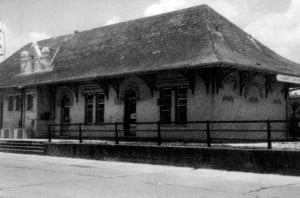
The Southern Pacific Railroad ran alongside Railroad Avenue, and thus made for simple traveling to the area. The Southern Pacific Railroad and the coal chutes beside the pumping station for the railroads were east, near the Prater Street and North Boulevard of the time. Washington College was on the north side of Railroad Avenue, between Prater and Shattuck Streets.
The population of Calcasieu Parish was estimated at 9,000. Water was pumped from the Calcasieu River with a direct pressure system into a Stand Pipe that had a capacity of 165,000 gallons. There was a volunteer fire department with one hand-engine and one hook and ladder truck drawn by horses. The streets were made of shell or gravel.
The Sunset Hotel was on the corner of Bilbo and Lawrence Streets. It was thought to have been built around 1882 as a railroad lodge for Southern Pacific and Wells Fargo employees. Sometime after the Kendall child was killed in 1902, the Sunset Hotel was destroyed, probably by fire, and rebuilt in 1903.
When the Southern Pacific Co. employed R.J. Kendall to work with its construction crews, he and his family moved into the Sunset Hotel. They felt safe there, even though Kendall was away from the family most of the time, working at the railroad station near Crowley.
On the afternoon his daughter Iris was found murdered, Kendall was there — 55 miles away. He received a telegram with the terrible news.
Kendall made every effort to get the quickest trip to Lake Charles, but it was the next morning before he arrived.
In the meantime, in Lake Charles, Mrs. Kendall and William Merritt, who had a saloon on Railroad Avenue, were walking along the path Iris Kendall used to run to her new home when they discovered the child’s body.
Quickly, Merritt sent a telegraph to City Police Officer Bourg asking him to send the coroner, Dr. T.H. Watkins and Police Chief Dees to the coal chutes, where the girl’s body had been found. Deputy Sheriff T.S. Hardy and Deputy Dan Harman were also notified; they were the first to arrive on the scene.
Hardy interviewed Mrs. Kendall. “Mrs. Kendall,” stated the American Weekly, “was naturally overcome at the ghastly fate of her little daughter.
“We rented a four-room house,’” she said, ‘belonging to Frank Davis, on First Avenue, just east of the Dummy Track and a few hundred feet south of the crossing of the Southern Pacific and the Belt Line.’
“’Wednesday, my two little girls, Iris, who is nine, and Eunice, who is six, and I decided to go to see the house. I didn’t have a key, but thought my room key form the Sunset Hotel might fit, so we went to the house to see what furnishings we’d need. The key fit and the children were delighted with the house.
“’We looked it over thoroughly, and then at noon we headed home, stopping at a grocery to buy lunch fixings.
“After lunch, the little girls begged to go back. Finally at 2 pm, I let oldest, Iris, walk back to the house. I thought she’d be perfectly safe since we knew the neighbors, and children in the neighborhood played outside all the time.’
“For a few minutes, Mrs. Kendall was overcome by racking sobs. ‘Oh, why did I let her go alone?’ she asked over and over.
“Finally, she got herself under control and continued, ‘William Merritt, who runs a saloon along the way, saw Iris walking toward the house and asked her where she was going. She told him, “to the new house my mother is renting. We’re going to move in soon.”
“In about an hour, I sent six-year-old Eunice to see why Iris had not come home. She, too, stopped and talked to Mr. Merritt, telling him she was going to find her sister, Iris, at the new house.’”
Grisly Discovery
The saloon owner Merritt, who was present with the mother at the questioning, continued the tale. “About 20 minutes later, I saw the youngest child come running back down the street crying.
“When I asked her what was the matter, she said, ‘My sister is hurt and I’m going after mama.’
“A few minutes later, the mother and child came running back and I went along with them to see what was wrong with Iris. C.F. Forbes, who was foreman of the nearby Coal Chutes, also came to see what had happened.
“We saw a horrible sight when we went into the house. The little girl was in the second room, surrounded by a pool of blood and with a mass of blood clotted around her mouth. Life was extinct and parts of the little body were still warm.
“I ran to a nearby house and got a sheet to cover the body.”
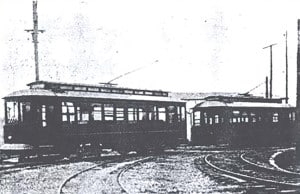
Myers took charge of the afflicted family until the next day, when the little girl’s funeral took place. The funeral was held at 3 pm on March 16 in the Church of the Immaculate Conception. A record of where Iris Kendall was buried cannot be found. But the Catholic Cemetery on the corner of Iris and Common Streets has five children’s graves that are not identified. One of these may well belong to Iris Kendall.
While the house the Kendalls rented might have been somewhat isolated, there were quite a few people dwelling around it. Ike Lewis had a store right across the tracks; Fireman Rachal’s restaurant a few hundred feet away; and a dwelling a block away was occupied by the O. Burghan family. Burghan was in charge of the pump at the nearby Southern Pacific water tank.
No Tangible Clue
“Seldom, if ever,” stated the American Weekly of March 15, 1902, “have so many parish and city officers been confronted by a more difficult case than the murder of little Iris. Although there were officers on the scene within an hour after the murder was discovered, they could not lay hands on a single tangible clue.
“People in the neighborhood were closely questioned, and the questioning resulted in the arrest last night of Nathan Bradley, who had been in charge of Ike Lewis’ store from 1-3 pm the day of the murder. He was arrested because he was suspected of knowing more than he chose to tell.
“Also arrested was a tramp named Shadrach Morgan.”
A posse was formed by Deputy Sheriff Lyons, which scoured the northeast part of Lake Charles, including Goosport, all night. The next day, police questioned neighbors and stayed active following up every story and clue that seemed as if it might offer results.
Mrs. S.O. Shattuck, who lived nearby, was among the first arrivals after the death was discovered. Dr. T.H. Watkins empaneled Shattuck, along with T.F. Elston, Ernest Bel, W.S. Goos and T.P. Sparks, as a coroner’s jury. Watkins directed them to report at his office at seven o’clock for the purpose of taking testimony. The coroner’s inquest was conducted behind closed doors.
Although the tramp named Shadrach Morgan and Nathan Bradley, who was black, were arrested, according to the officers, neither one had the slightest knowledge of how little Iris died. They were released.
T.H Watkins stated, “I do not believe this crime was one indicative of a tramp or Negro.” The mother thought the same thing. “I feel that the murderer is a white man here in Lake Charles,” she said.
“I think the way it happened was that this man grasped my little Iris by the throat, and she recognized him and let him know that she knew him. In his frenzy, he drew his knife across her throat and slaughtered my child as someone would kill a wild beast.”
Curiously enough, her story about a man’s appearance agrees fairly well with the deductions of many other thinking, sober-minded persons.
The railroad men working in the vicinity said, “We agree with Mrs. Kendall and Dr. Watkins and others in the neighborhood. This was not a crime of a tramp. The tramps who ride on our railroads would not attempt such a thing in broad daylight, where they could easily be seen from the dozen or so houses about a block away — especially not here, where the railroad tracks are only 50 yards away and there’s always men a plenty. No tramp would take that chance.”
Forty-Eight Hours Later
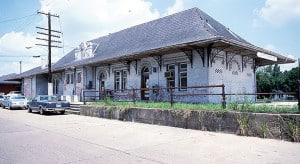
“A meeting of the jury is in progress this afternoon. Its members are walking from the Sunset Hotel to the scene of the tragedy and will visit several other houses en route, whose inhabitants are supposed to know something about the occurrence.
“Summing the whole thing up — four days ago, a little child was murdered in a vacant house, in broad daylight, in a well-settled part of the most populous city of the parish, within hearing distance of 100 people. The murderer was compelled to enter and depart by the public street entrance. And yet there is nothing to show that the slightest bit of conclusive evidence has been uncovered, nor any indication that either of the men arrested had anything to do with the crime.”
After prisoners Morgan and Bradley were released, no one was ever indicted for the crime, even though the Calcasieu Parish Board met and offered a $250 reward for information leading to the arrest and conviction of the murderer.
The reward was never claimed and the victim’s family soon moved away from Lake Charles.
– – – – – – – – – – – – – – – – – – – – – – –
Adapted from the book Crimes of the Past in South Louisiana by Nola Mae Ross. More information about Ross’ books can be found on Facebook under “Books By Nola Mae Ross.” Readers can purchase Ross’ books at susancastleberry@yahoo.com or at 337-540-6037.



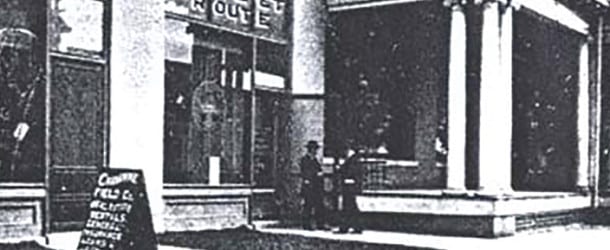
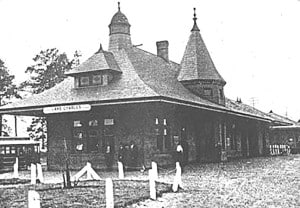












Comments are closed.